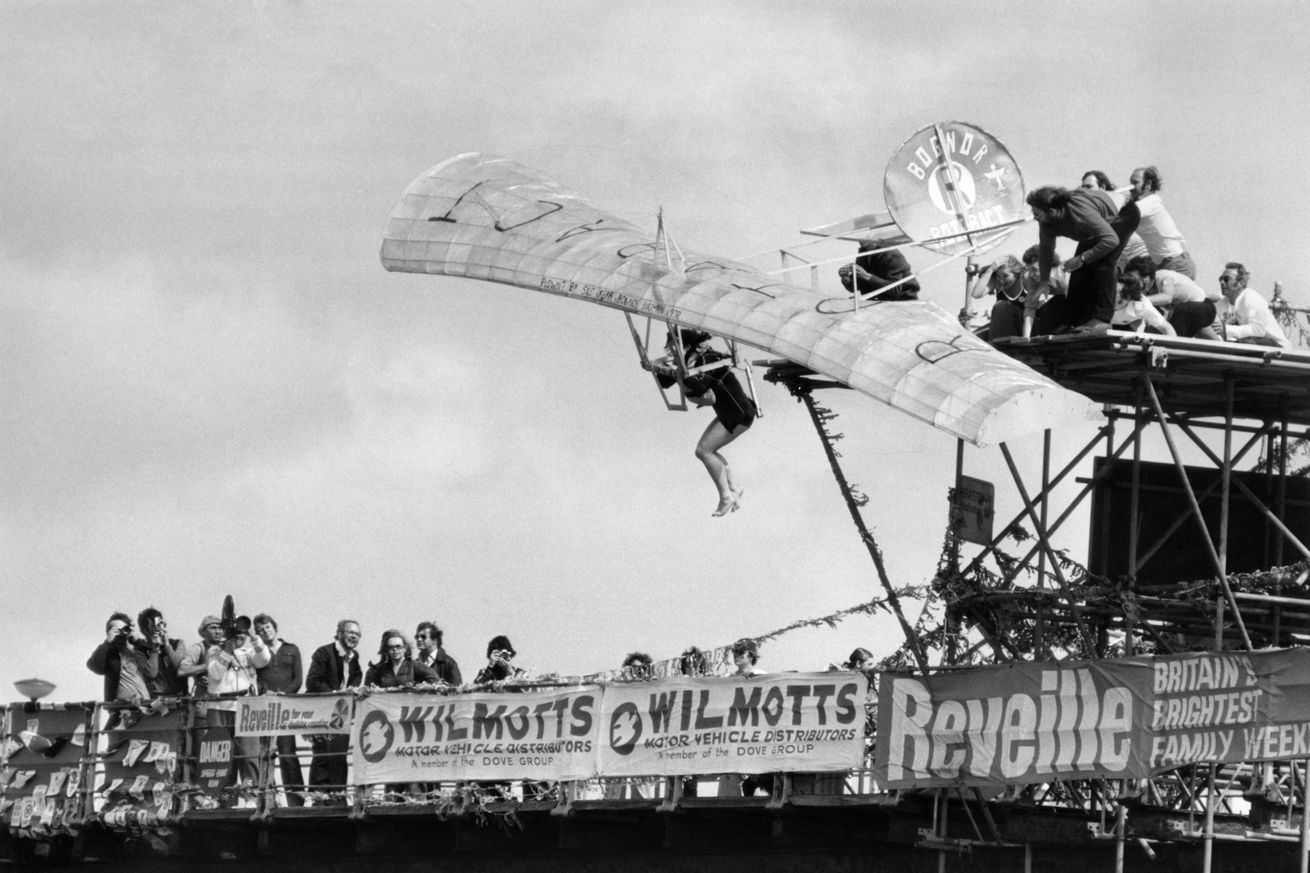
We have gone to see those wonderful men and their flying machines.
The Birdman Rally is a simple idea.
You have a pier. You have anywhere between 25 and 30 feet of air between you and a sharp plunge into a body of water. Your job is to make something without an engine that can carry you the furthest distance before you hit the drink. You can make it out of anything you wish, anything you so desire. It can only be made through you and your team’s know-how. A pilot needs to be inside of it the entire time. The currents, the winds, the approach, none of that is factored into before it’s your turn to push it off that ledge.
You show up and throw your contraption and a very brave friend into the air and one of two things will happen; you will either fly, or you will fall.
Oh, don’t forget to have fun and be yourself while you’re doing it.
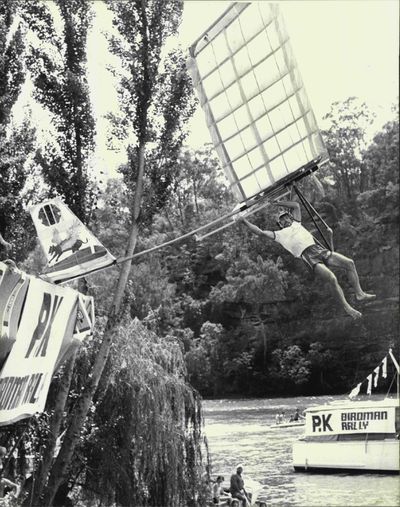
Only an idea this bizarre could’ve started started in England, but just about every continent and most major countries have adopted the concept in some form or another. Melbourne Australia hosts a popular event, as does Lake Biwa in Japan. The most popular of these events of course, are the events held by Red Bull throughout the US and the world, which have all but consumed the original rally itself into a single word.
Flugtag. Flight Day.
In the olden days, there were prizes for flying the furthest. Nowadays, it’s mostly for the sheer spectacle of a long fall and a preposterous contraption made by your fellow man. The expectation is that you’ll plummet straight into the water.
It’s part of the spectacle now; some people come with exactly one goal in mind; make something inane and goofy in your garage, stretch some kite fabric over it, and charge that thing over the cliff and hope you get lucky. Some will make things that don’t have a feather’s chance in hell of ever being anything but a swift trip to the often cold waters below, but that’s part of the fun. On some level you know the giant beer stein isn’t gonna fly, you know that it’s not going anywhere but one direction, and it’s not forward. For people who build those preposterous mechanations, that’s the point. They were never going for the record, but instead the novelty of a contraption hitting the water with a wet smack. Your laughter is their victory. By Red Bull’s own estimates, less than 90% of the entries will ever make it more than a meter.
There are still those who try to win anyway, because the passion of flight is more than worth the risk.
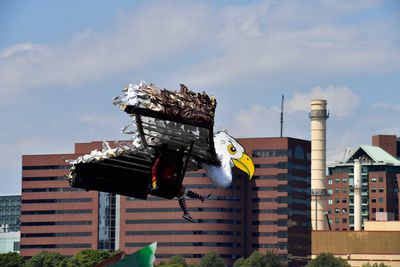
Photo by Paul Marotta/Getty Images
We like thinking of NHL teams as though they are continuations of years past. In most ways, they are.
Most players will end up in the same arena facing the same divisional opponents while wearing the same names they wore on the back and the same crest they wore on the front. The horn when they score goals will be the same, the same 60 minutes of hockey.
But not all of it will be.
New faces grace the locker room with alarming regularity. New numbers. New Nicknames. New traditions. New opponents twice a year. New sponsors you have to make a 15 second radio ad for. New fans wandering into the building for the first time, wondering what they’ll be seeing when the men take the ice. New boons from Management’s decision-making, and sometimes (hell, most of the time) the challenges from those same decisions made. The life of an NHL player, and indeed an NHL team, is ultimately a form of transience, no matter how much the Cap attempts to constrict it. Some of the faces stay the same, but the things that define eras of a team can fade and change in the space of a single summer.
The NHL, and hockey in general, is ever changing, and often deeply, unimaginably chaotic. It is a constant guessing game of adding and subtracting and tinkering and dealmaking and scouting and talent sniping; all in the hopes that their team, yes, their team alone, will be able to get through 82 games of NHL hockey. There are factors that can smooth these things out, analysis that gives you insight into where it can be gamed, but even that can sometimes be fooled; sometimes even math can be flummoxed.
There is no real guarantee to winning a hockey game beyond effort, skill, and a lot of luck. You have to win at least half of an 82 game season spread out over six months to even have a prayer of making the Playoffs. Some teams spent more than you did. Some teams found better value than you did. No guarantees at all of what you did having an effect.
They all try to win it anyway. Because the money at play is more than worth the risk.
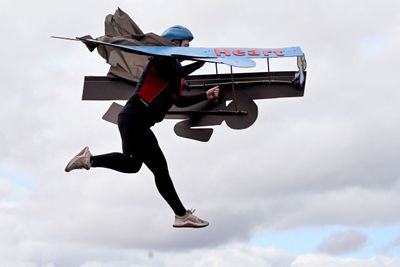
Photo by WILLIAM WEST/AFP via Getty Images
A big part of the reason 90% of the Flugtag machine designs fail to go comes from any number of things. The push off was bad. Someone pushing it held the wing too long. The design failed to take into account that a person had to be held up in the air to begin with. Any number of important structural elements failed at the worst possible time. It wasn’t even close to aerodynamic enough to stay airborne for more than a few seconds. All of that work, all of that toil, all of the many weekends spent in dusty garages, the wondering if the thing will even work or if it’s even supposed to coming into being.
It’s a lot like building an NHL team.
You’ve got a pretty good idea of what needs to be on there. You have wingers that are world class, you know that. You’re comfortable with your centers…or at least, some of it anyway. The goaltenders are fine, you saw to that personally. You’re reasonably certain that your buddy Dave’s recommendation of those defensemen will work. Some of the teams showed up with something that couldn’t possibly fly. Others, ones right next to you…look like they could go the distance.
Ultimately, the team that shows up on the ice will dictate whether or not you do the same thing the Flugtag builders are expecting to do:
Fly, or Fall. For 82 straight games.
You have to go ahead and do it anyway, because the work put into building it all needs to be paid off; for good or for ill.
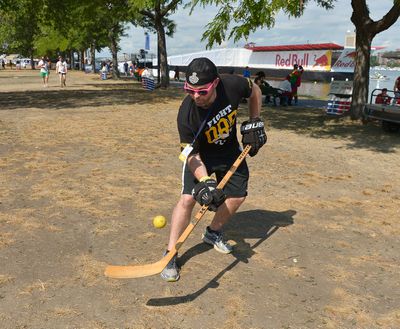
Photo by Paul Marotta/Getty Images
So, here we are. Game One of 82 once again. Edge of the pier.
All we can say or begin to say about this team or any other is that we are at that short jump now. 12 men; some new, some old, some freshly signed, some institutions of the modern age, have wheeled this thing we call the Boston Bruins to the starting position. We do not know how the seas underneath have churned the air it’s supposed to be sitting on.
Everything seems in order until it’s in the air. Then all bets are off.
We ultimately know little about what this version of the Boston Bruins will do. We know that parts of it should work, and parts of it should be better. We know that the rudders are sound and the wings strong. We know they have a goaltender now after days of bellyaching and woe. We know they have size and weight. We know they have bigger names who can help problem areas, or so we’ve been told.
We do not know what any of it will do until 7 o’clock tonight. The fun of this season, and indeed any NHL season, is finding that out together.
Laughing, complaining, gasping, bloviating…and cheering the entire way. Whether it means a sharp drop, or a sudden gust of wind is immaterial. All that matters now is to get this thing airborne and see what it does. Because as much as it is the team’s effort; it is ours as well.
To feel the adrenaline, the euphoria, the anxiety of gravity imposing it’s will on an NHL season. This is something, perhaps the only thing, fan and athlete share in this magical time.
Because the passion for victory will outweight any emotional pain we might endure if it doesn’t.
They’ve shot the gun. The green light has been given. All else fades away; the only thing between the playoffs and here is 82 games.
Fly, or Fall.
Grab the handles. Pray it stays together. Give it one last shove with all your might.
Let the wind take it somewhere wonderful.
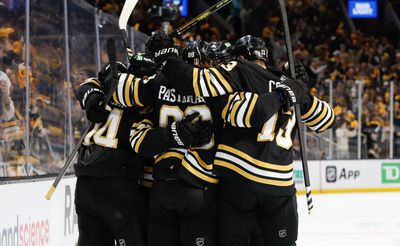
Photo by Rich Gagnon/Getty Images
Go Bruins.